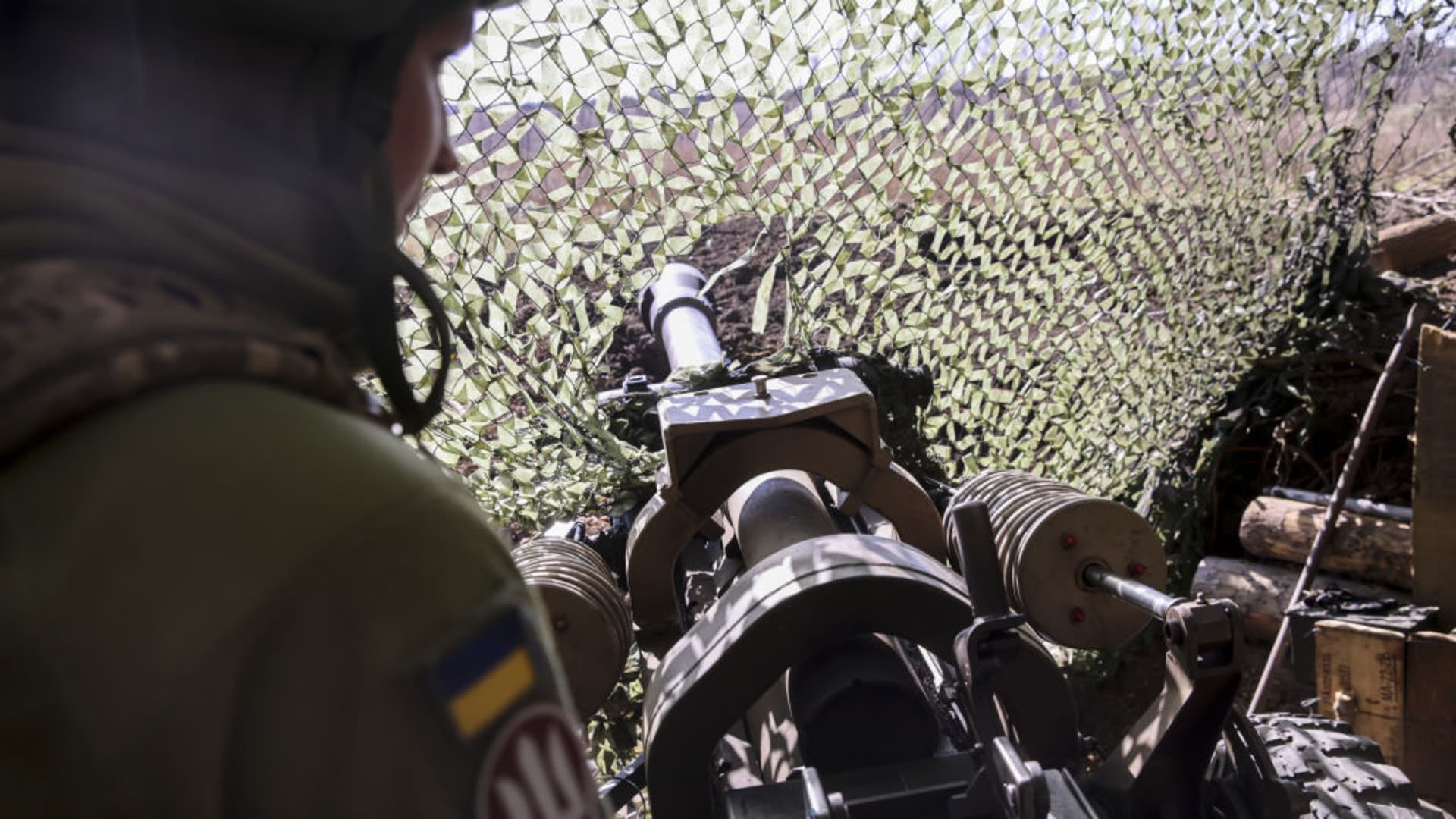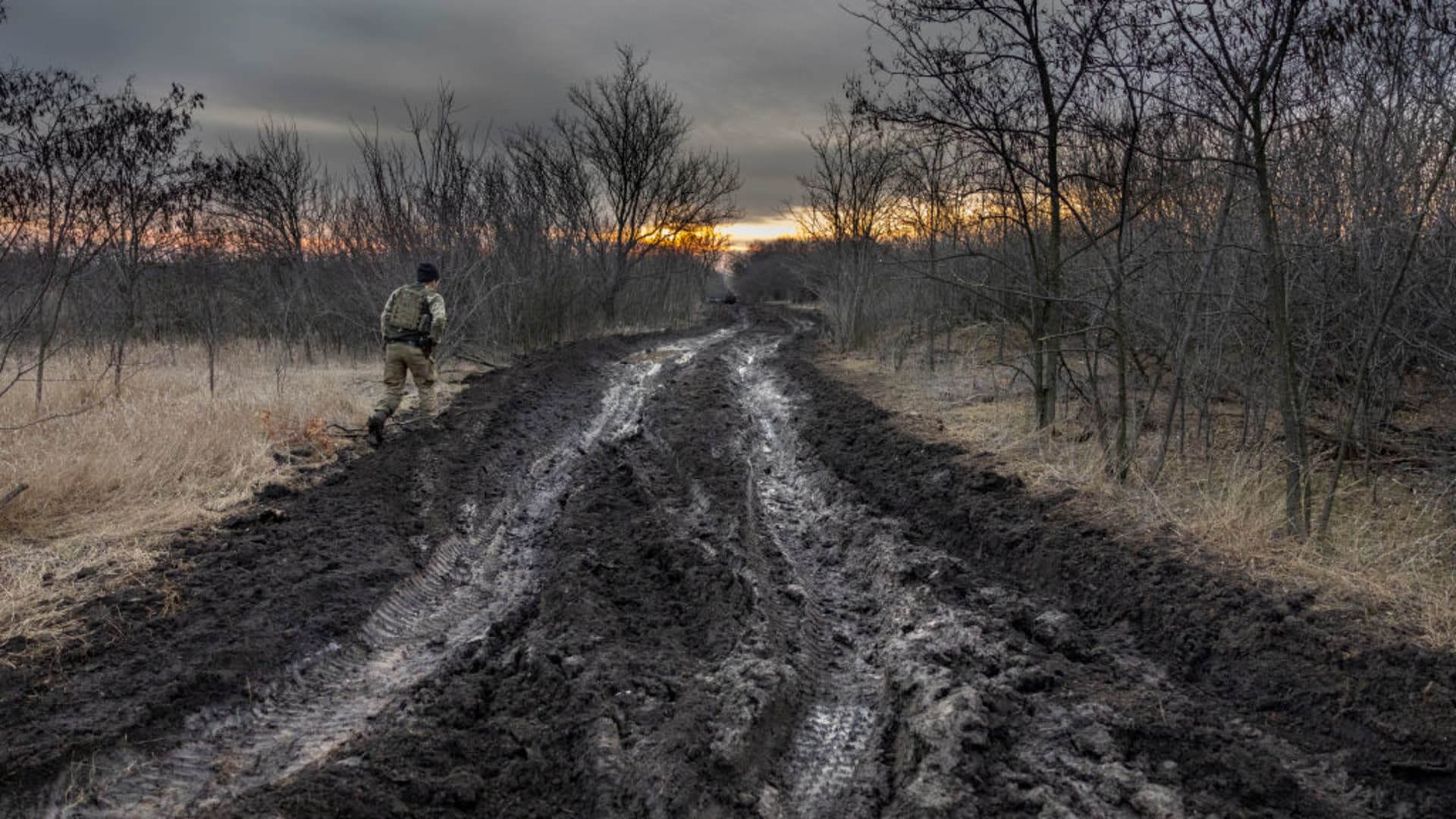
- Ukrainian forces are desperately trying to battle through deep Russian defenses along the south and east of the country before winter sets in.
- Ukraine has a narrowing window of opportunity for making gains before the weather turns and the infamous muddy season, known as "rasputitsa" in Russian and "bezdorizhzhia" in Ukrainian, arrives.
While the world is distracted by geopolitical turmoil in the Middle East, Ukraine continues to fight Russian forces across a swathe of the country, battling through deep Russian defenses along the south and east.
It's an understatement to say Ukraine's counteroffensive, launched in June, has not been as successful as Kyiv and its Western allies hoped it would be — with Russian forces deeply dug in to defensive positions, progress has been tough for Ukraine and only a dozen or so towns and villages have been recaptured.
Russia still controls around a fifth of Ukraine, including most of the Luhansk and Donetsk regions in the east; the Crimean Peninsula and Zaporizhzhia in the south; and a chunk of the neighboring Kherson region.
Get Tri-state area news delivered to your inbox.> Sign up for NBC New York's News Headlines newsletter.
"Ukraine's counteroffensive has not achieved the presumed military and political objectives so far and the prospects of a breakthrough appear limited," Andrius Tursa, Central and Eastern Europe advisor at risk consultancy Teneo, said in a note Monday.
"Despite inflicting significant losses on Russian armed forces, Ukraine's four-and-a-half-month-old counteroffensive has not achieved major territorial gains nor managed to slice through Russia's 'land bridge' to Crimea," he added.
Muddy season is near
Money Report
Ukraine has a narrowing window of opportunity for making gains before the weather turns and the infamous muddy season, known as "rasputitsa" in Russian and "bezdorizhzhia" in Ukrainian, arrives.
"Limited progress to date tempers hopes of a breakthrough in the near term, especially as the autumn weather makes large-scale movement of heavy military equipment more challenging, and Russia is ramping up pressure in other parts of the frontline," Tursa noted.

Muddy roads and fields wreaked havoc on ground conditions and offensive operations last fall and spring, and are likely to do so again. That would put an effective halt on offensive operations for weeks before the ground freezes over and vehicles and troops can move more easily again. It was hoped Ukraine would have made more progress by now, analysts noted.
"The hope is that they're far enough through the Russian defensive lines now ... to make some rapid progress. Whether they will or not, we don't know, but they're certainly running out of time in which to do it," Michael Clarke, an independent defense analyst who was director-general of the Royal United Services Institute from 2007 to 2015, told CNBC.
"They'll keep on fighting during the winter but what will happen is at the end of November the weather will turn pretty wet, and that will put a block on things until it turns cold, which will be sometime late December, early January," he noted.

"Once it turns cold again, they'll be able to use the vehicles more efficiently because the ground will be hard but [in the meantime] the offensive will undoubtedly slow down. ... So the best time for them to have broken through is now, and they haven't done it," he said.
CNBC has contacted Ukraine's Defense Ministry for a comment and is awaiting a response.
An 'enormous' bargaining chip
But news for Ukraine hasn't been all bad.
Its forces have seen gains around the devastated city of Bakhmut in eastern Ukraine and east (left) bank of the Dnieper River in Kherson. They also achieved something significant weeks ago, breaking through a major first line of Russian defenses near the village of Robotyne in the Zaporizhzhia region, and are looking to push southward toward Tokmak.
If they can reach the heavily defended city that acts as a transport and logistics hub for Russian forces, they stand a chance of breaking supply lines to Russian-occupied Melitopol and Crimea further south.
"The area we're all looking at, the one that makes the most strategic difference, is the Orikhiv-Tokmak axis," Clarke noted. Orikhiv lies to the north of fighting hot spot Robotyne while Tokmak lies south of the village.
"If they can get to Tokmak and take it, and I think they probably will, then they do achieve something. They'll be able to bring their artillery and rocket artillery close enough to bombard Crimea almost at will," he said.

"At the end of this offensive, although they almost certainly won't have reached the coast, which originally we thought they might be able to, if they can put Crimea at risk all the time, just to make it unsafe for the Russians to use it as a big military base ... then that will be an enormous political bargaining chip, for any negotiations they might go into next year," Clarke said.
The problem for Ukraine, he said, is "that won't look much like enough to justify all the help that's been given" — some of Ukraine's Western allies are starting to tire of Kyiv's military and financial needs, which could become more pronounced as war erupts in the Middle East.
Russia has 'significant advantages'
Kyiv has argued that by fighting Russia it is defending the world from an aggressive and expansionist Moscow.
Unable to mobilize the hundreds of thousands of troops in a way that Russia can, it says it desperately needs more sophisticated long-range arms and equipment, and particularly air power, if it is to effectively destroy Russia's occupying forces.
Western allies have tended to procrastinate over whether to give heavier weaponry to Ukraine. Last winter's deliberations over whether to send heavy battle tanks to Kyiv was one example.
And once decisions are made to supply such equipment, long waits follow, again constraining what Ukraine can do in its counteroffensive. Ukraine had pleaded with its allies for F-16s, only to be refused. Months later, a number of European allies said they'll give F-16s to Ukraine — but not before 2025.
In the meantime, analysts say Russia has a distinct advantage in this conflict, given that it's largely in a position of defense, rather than offense.
Russian forces had months to prepare layers of defenses including extensive networks of trenches; anti-tank obstacles such as ditches and "dragon's teeth"; and minefields. Russian forces are also receiving support from artillery, attack helicopters and other aircraft, again impeding Ukraine's forces.
Minefields, in particular, have disrupted Ukraine's offensive momentum and rate of advance, according to analysts at the Center for Strategic and International Studies (CSIS).
Analysis by the think tank shows that, at the peak of their summer offensive between early June and late August, Ukrainian forces advanced an average of only 90 meters (98 yards) per day on the southern front.
The CSIS noted that some minefields have been expanded from 120 meters to 500 meters in some areas, making Ukraine the most heavily mined country in the world today, and the situation a formidable and time-consuming challenge for its troops to overcome.

"Ukraine retains the operational initiative, but its relatively slow pace of advance and the trade-offs it has made to preserve personnel and equipment indicate that the [Russian] defense has significant advantages," CSIS analysts Seth Jones, Riley McCabe and Alexander Palmer said in a research note in October.
Changing fortunes?
Aside from Russia's substantial defensive fortifications, the slow pace of Ukraine's was not due to poor Ukrainian strategic choices, the CSIS noted, but was likely caused "by a Ukrainian change in force employment, especially the deliberate adoption of small-unit tactics, and the lack of key technology such as fighter aircraft for suppression of enemy air defense and close air support."
While Ukrainian military progress is still possible, the analysts said, the U.S. and other Western countries need to provide sustained military aid and other assistance for Ukraine to be able to continue. For his part, President Joe Biden has pledged to keep supporting Ukraine, though the U.S. is preoccupied by the escalating conflict between Israel and Hamas.

CSIS analysts stressed that slow progress on the southern front does not mean that Ukraine is failing or will fail in its objectives, noting that "it merely indicates that seizing terrain is difficult, probably more so than in its previous offensives."
"It is possible that Ukraine's rate of advance may accelerate if it can overcome Russia's defensive positions near the current front lines or if the Russian military experiences operational or strategic collapse," they stated.
"Such changes in fortune are not unprecedented in modern warfare," they added.






